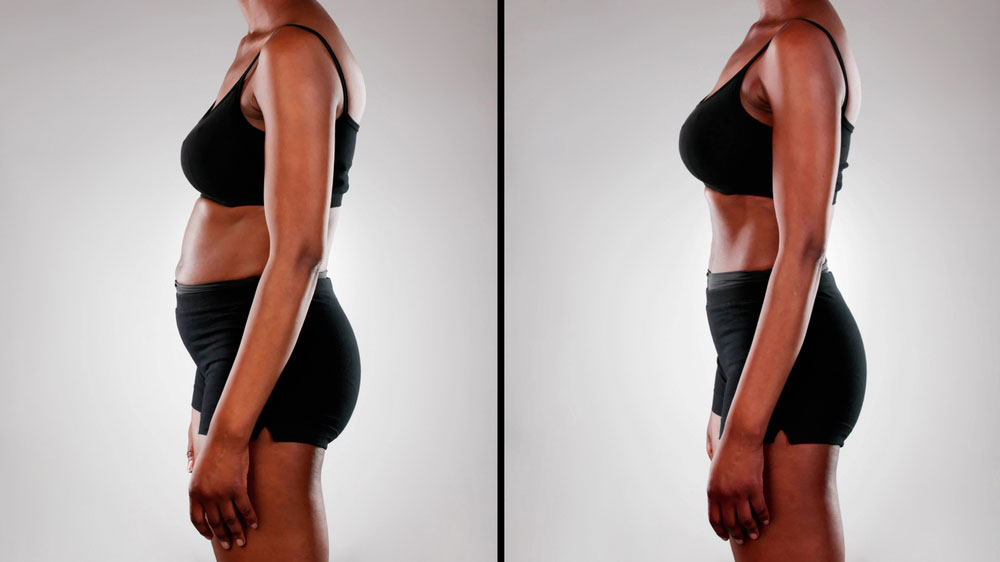Thanks to game-changing innovations in breast augmentation techniques and technology, you can now choose between multiple safe and effective procedures.
Dr. Okoro of Georgia Plastic & Reconstructive Surgery is among the frontrunner class of board-certified plastic surgeons offering breast fat transfer as well as breast implants to patients in the Atlanta, Vikings, and Woodstock, GA areas.
If you’re wondering how these treatments differ and/or which one might be best for you, this guide will walk you through the basics of each procedure, including the process itself, recovery, and more.
Breast Implants
A decades-old mainstay in the world of plastic surgery, most people are familiar with breast implants. Plenty of refinements have been made since the advent of breast implant surgery in the 1960s, but at its core, it’s the same concept.
How the Procedure Works
While surgeons can tailor their approach based on the patient’s goals and presentation, here is the general framework for how breast augmentation works:
- The surgeon will make an incision underneath the breast tissue, under the arm, or around the areola
- The existing breast, connective, and muscle tissue is separated to create an area large enough to fit the implant
- The implant is inserted and centered
- The incision is carefully closed with sutures
Generally, breast implant surgery takes between one to two hours, and is performed while the patient is under general anesthesia. The two major types of implants that can be used are saline and silicone, each of which comes with unique benefits and use cases.
Key Benefits
Breast implant surgery is a time-tested method for significantly increasing the volume of the breasts while retaining and/or improving their shape and symmetry.
Thanks to the wide variety of implants available, patients and their surgeons can work together to fully customize the experience, adding just as much volume as is desired.
Continued refinements in breast implant procedures have also significantly shortened and improved the recovery process, allowing patients to resume their normal lives much sooner and with less discomfort.
Recovery Time and Aftercare Best Practices
It is common after breast implant surgery to experience a moderate amount of swelling and discomfort, which are typically resolved with medication.
Keeping the breasts supported is vital for a healthy recovery, both to support the healing tissue and the reshaping process.
While each case is unique, most patients are recommended to refrain from more strenuous activities for at least 4 to 6 weeks.
Who Is Eligible for Breast Implants?
While breast implant surgery is widely well-tolerated by anyone in reasonably good health, there are a few key factors that can affect your eligibility for this procedure.
These include, but are not limited to:
- Autoimmune disease
- Upcoming chemotherapy treatments
- Upcoming radiation treatments (of breast tissue)
- Conditions that cause blood clotting and/or poor healing
- Poor circulation of the treatment area
As always, the best way to confidently confirm whether or not you are a candidate for this procedure is to consult with a qualified surgeon. Patients in the Atlanta, Marietta, and Douglasville, GA areas are welcome to contact Georgia Plastic & Reconstructive Surgery today, where Dr. Okoro will answer all of your questions relating to eligibility.
Breast Fat Transfer
As the name implies, breast fat transfer involves removing fat from one area of the body and using it to increase the volume of the breasts.
Breast fat transfer may produce a similar end result to breast implant surgery, but is preferred by many patients for its more natural approach.
How the Procedure Works
The surgeon uses liposuction to remove fat from the thighs, buttocks, torso, or other areas. This fat is then injected into the breasts to increase their volume, and is shaped to improve symmetry and aesthetic appeal.
Key Benefits
Breast fat transfer surgery is less invasive than breast implant surgery, meaning less discomfort and downtime.
Another major advantage built into the procedure is the ability to enhance two areas of the body at once, removing stubborn fat while also enhancing the breasts.
Generally, this procedure requires less frequent adjustment and inspection because the grafted tissue assimilates seamlessly with the surrounding tissue, allowing for low-maintenance aftercare.
Recovery Time and Aftercare Best Practices
As mentioned, breast fat transfer recovery is considerably easier and shorter than that of breast implant procedures. While you may experience some discomfort, swelling, and bruising, these symptoms are generally milder, and resolve within three weeks in most cases.
Patients are still recommended to refrain from gentle exercise for at least three weeks, and can resume more strenuous exercise after around six weeks.
Exercise or otherwise, it’s important to avoid applying any pressure to the area soon after the procedure, as the grafted tissue needs time to integrate with the surrounding tissue.
Who Is Eligible for Breast Fat Transfer?
The list of factors that may render someone ineligible for this procedure is considerably shorter than that of breast implant surgery, thanks to the less invasive method used.
Still, patients looking for a large increase in breast volume, and those who do not have enough body fat in other areas for grafting purposes, may not be ideal candidates for breast fat transfer.
Experience Life-Changing Results With Breast Augmentation In Atlanta, GA
Serving the Atlanta, Marietta, and Douglasville areas and beyond with frontier-leading breast augmentation procedures, Dr. Okoro and his team are here to guide you through the process so you can feel comfortable and confident in your decision.
When you’re ready to see life-changing results, contact Georgia plastic & Reconstructive Surgery today and transform into a happier and more confident you!




